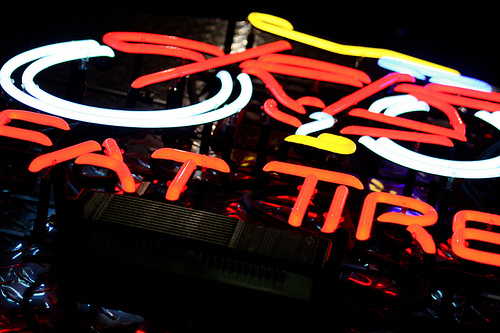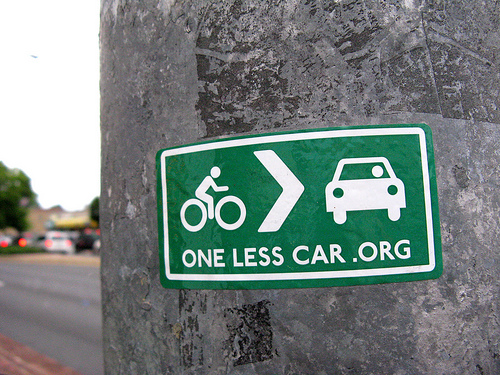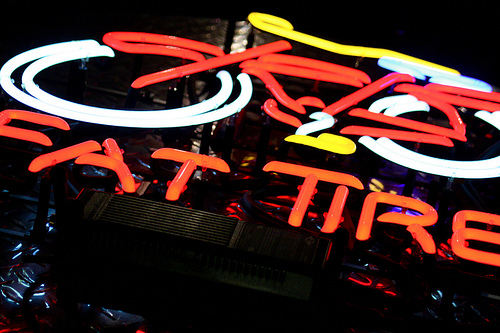 Photo: Brian WilkinsAs Chelsea Lincoln pedaled up a hill one day, partway through her seven-mile commute, someone cruised by in a car, yelling: “You’re fat!”
Photo: Brian WilkinsAs Chelsea Lincoln pedaled up a hill one day, partway through her seven-mile commute, someone cruised by in a car, yelling: “You’re fat!”
“The irony of the situation,” she told me in an email, “was ridiculous.”
The relationship between bicycling and health — and driving and ill-health — has been demonstrated many times over. The promotion of bicycling and bicycle-friendly streets has become integral to a number of high-profile public health efforts aimed at mitigating what is widely termed to be an American “obesity epidemic.”
Lincoln, a graduate student in Portland, Ore., rejects the term “obesity,” along with the negative stereotypes and focus on weight loss that come with it, and prefers to say “bigger bodied” or, though she says many don’t understand it, “fat.”
She’s just starting to ride again after an injury forced a long hiatus, but in the past she’s been used to riding 20 to 30 hilly miles a day for transportation and fun. “My body has always been fat,” she said, “but I was really fit and healthy, with all the biking I did. I chose self acceptance as a way to allow myself to be myself without shaming my body.”
Bicycle transportation, despite its importance to anti-obesity campaigns, isn’t necessarily a recipe for weight loss. It is, however, exactly what public health advocates should be promoting instead: An excellent way to get and stay healthy, no matter what your body type.
The irony is that body weight — and the cultural baggage that comes with it — can be a barrier to getting on a bike. “Any exercise can be difficult to get started, and unfortunately fat people face obstacles with judgment, finding a bike that works for them and proper clothing for biking,” Lincoln said.
Despite this, it can be done. And it can be amazing.
Developing a good relationship with someone at a bike shop helps. Lincoln “never felt comfortable in most bike shops, since I felt judged, or they assumed I was just getting started in biking and treated me like a moron.” She finally found a shop where the owner was “really friendly, welcoming, and helpful.”
You don’t need a special bike or components. Really. Many bike shop employees will try to steer bigger-bodied customers towards hybrids. That might be what you want — a slower, slightly more upright ride that isn’t necessarily built to put a lot of miles on — but it might not. Try out a range of bikes before making your decision. If you’re concerned about a bike being sturdy, look at mountain bikes and touring bikes — they’re built to get you up hills and take a beating.
Investing in a set of strong wheels will help you avoid the common peril of heavy riders, kid-haulers, and cargo bikers alike — the broken spokes. Likewise, if you always feel in danger of tipping over while riding, try a set of wider tires — the less tread on them, the faster you’ll be able to go.
Beware the allure of the wide seat with lots of padding. If you sit bolt upright on your bike — say it’s a cruiser, Dutch bike, or recumbent — then a wide seat makes sense. Otherwise, it’s your sitz bones that rest on the seat, not your fundament, and having a lot of extra squishy stuff down there can lead to all kinds of discomfort.
You do need your bike to fit you well so you don’t strain your back and knees. A centimeter in seat height can make all the difference between bliss and knee pain. Check out some basic tips on choosing and adjusting a bike yourself.
Some of the best-dressed people I see riding around Portland are larger women. Someone finally clued me in — it’s because bike gear can be nearly impossible to find if you’re a woman over size 14 or so. There are some online outlets, like the woman-owned Team Estrogen, that carry plus sizes, but the selection may be less than amazing. A friend’s sister chooses to ride slowly and wear a classy wool jacket to keep the rain off because she can’t find a high-tech one that fits. Lincoln says she had to make her own rain pants because the only plus sizes were fit for men.
But don’t despair. There are affordable, one-size-fits-all rain accessories for fancy technical rain gear: a poncho and a good set of fenders for your bike.
I asked Lincoln for more tips. “My advice for fat folks just getting started is to find support and just go for it,” she said. “Support can be friends or family who are understanding, or others who have been in the same situation.”
For exactly that reason, she helped create a Portland-oriented Facebook group called Big Butt Biking, which plans group rides and regular social get-togethers to support each other and share their experience and knowledge.
People still sometimes yell at Lincoln out of cars, but she doesn’t let it get to her: “There is a lot of empowerment in the freedom of a bike and not allowing others to get you down.”



